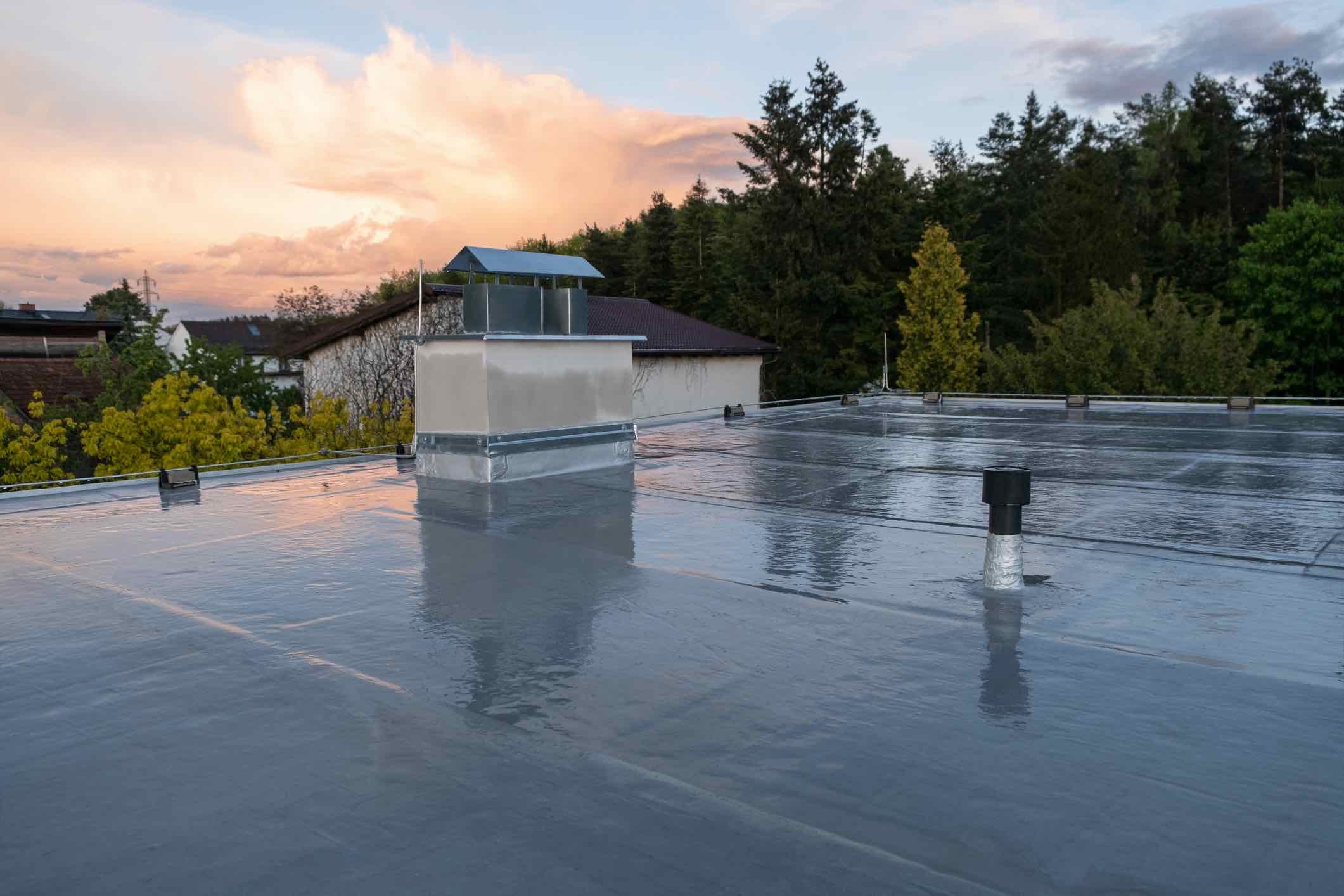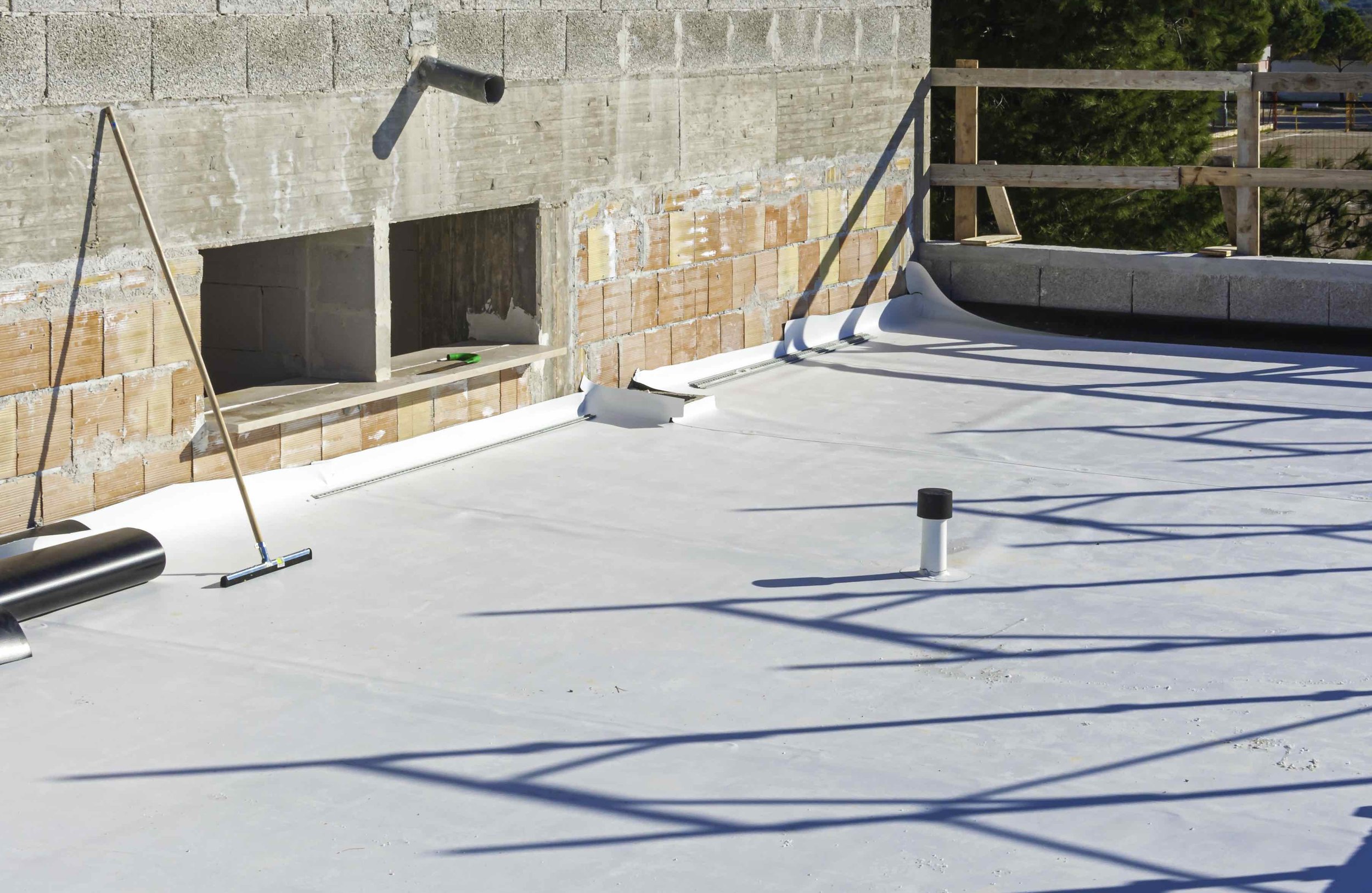What is TPO Roofing? Everything You Need to Know
TPO roofing, also known as Thermoplastic Polyolefin roofing, is a popular roofing type for both commercial and residential buildings with flat or low-sloped roofs. This guide will delve into the specifics of TPO flat roof systems, its installation steps, cost, advantages, disadvantages, and frequently asked questions.
Understanding TPO Single-Ply Membrane Roofing (Flat Roof)
TPO, short for Thermoplastic Polyolefin, is a single-ply roofing membrane that has gained popularity over the past few decades, particularly in commercial applications. This type of roofing belongs to the broader category of rubber roofing materials. It is known for its heat-reflective and energy-efficient properties.
History and Benefits of TPO Roof Installation
Introduced in the 1990s, TPO systems were initially seen as an economical alternative to PVC roofing for the commercial roofing market. It rapidly gained popularity in the roofing industry due to its superior performance for flat roof applications. With increasing demand for energy-efficient roofing, This commercial roofing system has become a preferred choice for many commercial roofing contractors.
TPO Roofing Materials and Types
TPO is designed to combine the advantages of PVC and EPDM (ethylene propylene diene terpolymer) roofing, offering an environmentally conscious flat roof option.
Composition of TPO Roofing
The membrane is composed of three bonded layers to ensure a leak proof application:
TPO base layer
Polyester-reinforced fabric center, also known as scrim
TPO top layer
Each thermoplastic polyolefin (TPO) layer comprises ethylene-propylene rubber and is manufactured with fillers such as talc, fiberglass, and carbon fiber. These fillers contribute to the strength and flexibility of the membrane. Unlike other roofing options like PVC, TPO does not contain environmentally harmful chemicals such as chlorine. The best roofing for environmental concerns between PVC and TPO is clear.
TPO Roof System Options
TPO systems have gained popularity in residential settings in recent years due to its color range, curb appeal, and energy-saving potential. TPO comes in white, grey, or black and are available in different thicknesses and widths to suit various applications for the roofing market. Many new TPO installations are applied to roof decks for commercial and residential roofing.
TPO Roofing Manufacturers
TPO (Thermoplastic Olefin) roofing is gaining popularity in the construction industry due to its durability, energy efficiency, and cost-effectiveness. There are several TPO roof membrane manufacturers in the market who specialize in producing high-quality materials. TPO manufacturers use state-of-the-art technology and combine it with innovative techniques to create roofing membranes that can withstand extreme weather conditions, such as harsh UV rays, heavy rains, and strong winds. This roofing is known for its exceptional heat-reflective properties, which can significantly reduce the cooling costs of a building. Moreover, these roofs are resistant to mold, algae, and punctures, making them a long-lasting choice for commercial and residential buildings. It is important to choose a reputable manufacturer that offers a warranty on their products, as this ensures that the material is of high quality and can withstand the test of time. By sourcing from a reliable manufacturer, building owners can enjoy the benefits of a durable and energy-efficient roof.
TPO manufacturers listed in alphabetical order:
The Installation Process of TPO Roofing Systems
The installation process involves laying down the TPO material after preparing the existing roof. Once the membrane has been rolled out over the roof, it is secured to the roof's cover board with a mechanical tool or adhesive. The overlapping membranes of TPO are seamed together using a technique called hot air-welding.
TPO Roofing Costs
The cost of TPO roofing varies based on factors such as the type of insulation used under the membrane, the size of the roof, and the labor charges. In general, you can expect to pay around $14.00-$17.00 per square foot for a smaller TPO membrane roof and around $12.00 per square foot on slightly larger projects.
Advantages of TPO Membrane Roof Systems
TPO has gained notoriety as one of the best roofing systems on the market. TPO offers several benefits, including:
Flexibility: The membrane is highly flexible, making it more resistant to tears, punctures, and damage from the building moving and settling.
UV Resistance: TPO roofing is resistant to ultraviolet (UV) damage and chemical exposure, extending its lifespan.
Environmentally Conscious: TPO membranes don't contain chlorine, an environmentally hazardous chemical found in some other roofing materials.
Strength: The hot air-welded seams are not only flexible but strong. They are up to four times stronger than EPDM seams, which use adhesive or tape.
Disadvantages of TPO Roofing
On the flip side, TPO installations have a few drawbacks:
New Product: The drawbacks stem from the fact that it is relatively new, as far as roofing and building materials go.
Potential for Seam Failure: The major issue that can arise from a poor TPO product is seam failure in the sheets of TPO. The most high-quality TPO membranes have high welding temperatures.
Heat Damage: Some TPO products are prone to failure with extended exposure to heat.
Variability in Quality: Not all TPO is created equal, and manufacturers are consistently changing their formulations to get the best results at the lowest cost.
Everything You Need to Know about TPO Roofing
Is TPO roofing durable? Yes, it's known for its durability. TPO is resistant to mold, tears, punctures, and damage from the building moving and settling.
Is TPO roofing expensive? Compared to other types of roofing, TPO is cost-effective. However, the cost can vary based on several factors, including the type of insulation used under the membrane and the size of the roof.
How long does TPO roofing last? A well-maintained installation can last for about 25 years. However, factors such as the weather in your area, how much direct sunlight hits it, and the quality of installation can influence the roof replacement lifespan.
Can TPO roofing be used on residential properties? Yes, while it's one of the fastest-growing options for commercial buildings, it can also be used for residential properties with flat or low-sloped roofs.
Conclusion: TPO Contractor Roofing Project Costs
TPO roofing is one of the most economical choices for flat and low-sloped roofs. While it is a relatively new product, it has proven to be reliable in the industry. With its flexibility, UV resistance, and environmental friendliness, this commercial roof can be an excellent choice for your roof. However, ensure you choose a reputable roofing contractor (National Roofing Contractors Association) with experience in TPO roofing to get the best results.



